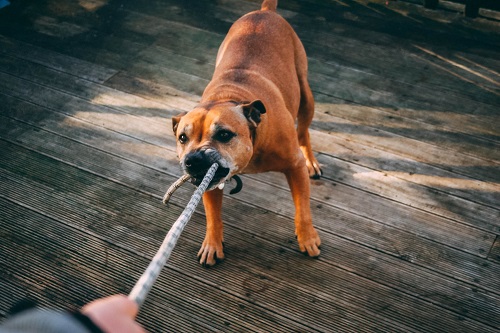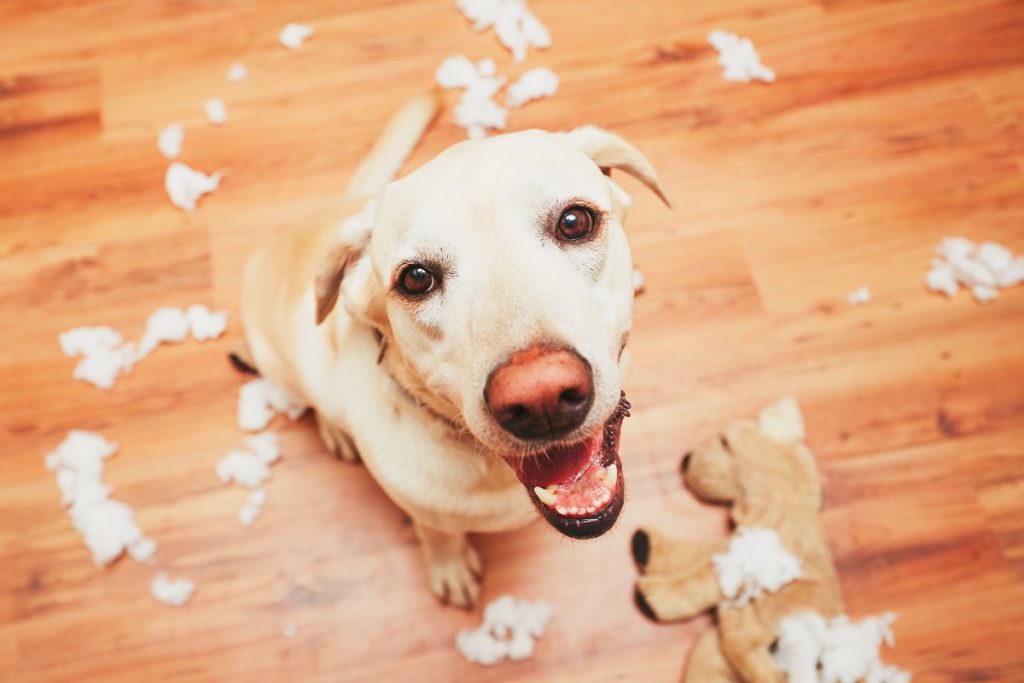Anyone with an older dog can attest to the fact that you can teach an old dog new tricks. Your dog is continually growing and adapting to the world around him. Behavioral problems can seemingly come out of nowhere, so what can you do to correct your dog’s bad habits? Whether your dog’s behavioral issues are deeply rooted in his personality, or newfound quirks you are trying to rid him of, here are a few tips for how to correct a dog’s bad behavior.
For most behavioral issues, at home, training is an excellent way to rid your dog of bad habits. The only thing that at-home training requires of you as an owner is diligence and time. Your dog looks to you as a significant guiding force in his life. As such, you will need to put in the time necessary to break him of his bad behavior.
How to Correct a Dog: At Home Training Tips
Here are a couple of training technique tips that will ensure your dog is set up for success:
Be swift. The faster you react to your dog’s negative behavior, the easier it is for him to understand that his most recent venture is under scrutiny. The longer you wait between dirty deed and consequence, the easier it is for your dog to dismiss his behavior as acceptable and your punishment as unwarranted.
Be firm. Yelling doesn’t work. Your dog doesn’t understand yelling as a disciplinary measure. An increase in volume will frighten him and may even work against you if he is fearful. A firm verbal cue in a low register has proven to work best as a way to verbally communicate with your dog the error of his ways.
Try positive reinforcement! It doesn’t always have to be negative, find ways to reward good behavior. If your dog has an issue with jumping onto furniture, the next time you see him lay on the floor when he otherwise might have jumped on the couch, reward him with a small treat. Replacing a bad habit with a good one is a crucial piece of the training puzzle, especially when it comes to breaking an old habit.
Obedience School
Obedience school is a fine option for those dog owners who don’t necessarily have time for intensive training at home. However, obedience schools are expensive, and they are not a cure-all. Typically obedience schools require your dog to be left at a training facility for an extended period. It is often reported that dogs who do very well in obedience school often come home and jump right back into a pattern of disruptive or destructive behavior.
Often the progress seen at obedience school is mostly in part to the environment. Your dog is a creature of habit, and the situation often dictates what behaviors are acceptable. Those habits that were broken at obedience school often come flooding back as soon as the old environment is reintroduced because it triggers a pattern recognition in your dog that reminds him of his past behaviors.
If you do go with obedience school, you must take responsibility as the owner and keep up with the new training your dog has been introduced to. There are many successful cases where a dog has returned to his home environment and maintained a pattern of good behavior, but this will be reliant on continued and disciplined training on the part of the owner.
Remaining Diligent
The most important thing to remember when attempting to fix problematic behavior is to remain consistent. Whether training was  implemented in the home or outsourced to an obedience school, your willingness to stay vigilant will determine the success of your dog. Your verbal and physical cues should be the same every time, and the punishment for misbehaving should always be consistent.
implemented in the home or outsourced to an obedience school, your willingness to stay vigilant will determine the success of your dog. Your verbal and physical cues should be the same every time, and the punishment for misbehaving should always be consistent.
Your dog has excellent pattern recognition skills and uses these powers to determine what he can push the boundaries on. The more consistent your responses are to specific behaviors, the easier it is for him to recognize and adapt. Create strong connections between behavior and consequence by taking resolute and immediate action that establishes a regular and recognizable pattern.
Your dog has a great propensity for change and growth. As a natural explorer, his curiosity will work in your favor for helping him overcome his bad behavior. When working with your dog to correct bad habits, it is essential to remember that you are a team. Your dog cannot do this without you, and while getting frustrated may be tempting, it only harms the process of growth and positive development. Your dog is eager to please if you show him the ropes of being a good boy, chances are he will respond with astounding aptitude.
Sources:
“Correcting Dog Behavior: How to Stop Bad Dog Behavior.” American Kennel Club, 2 Aug. 2016, https://www.akc.org/expert-advice/training/how-to-curb-unwanted-dog-behaviors/.
Meliker, Shayna. “How to Curb 7 Common Dog Bad Behaviors.” Vetstreet, http://www.vetstreet.com/our-pet-experts/how-to-break-7-common-bad-dog-habits.
Stregowski, Jenna. “How to Solve 10 of the Biggest Dog Behavior Problems.” The Spruce Pets, 31 Aug. 2019, https://www.thesprucepets.com/common-dog-behavior-problems-1118278/
“How to Control Bad Dog Behavior.” How to Control Bad Dog Behavior | Brookline Dog Grooming – Brookline, MA, https://brooklinedoggrooming.com/blog/57457/how-to-control-bad-dog-behavior.




